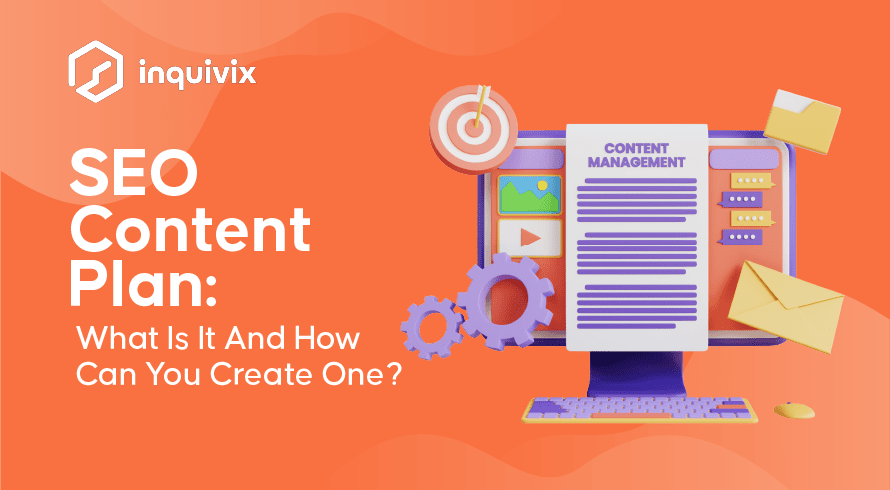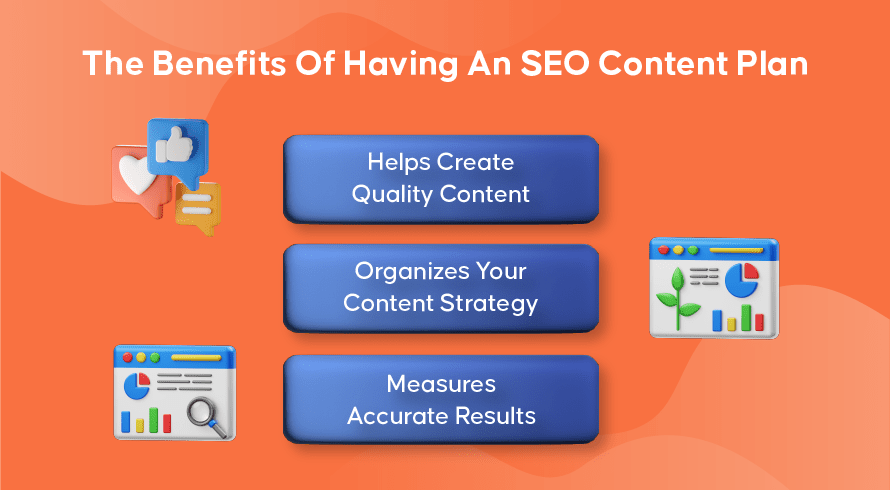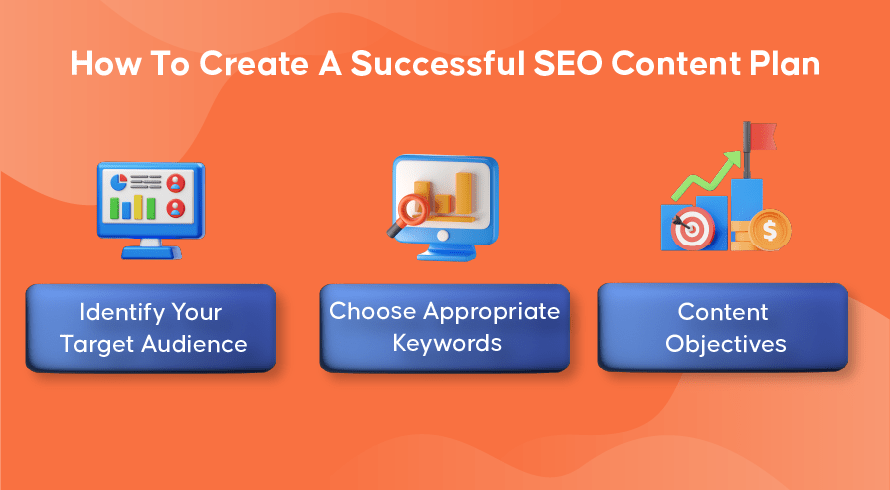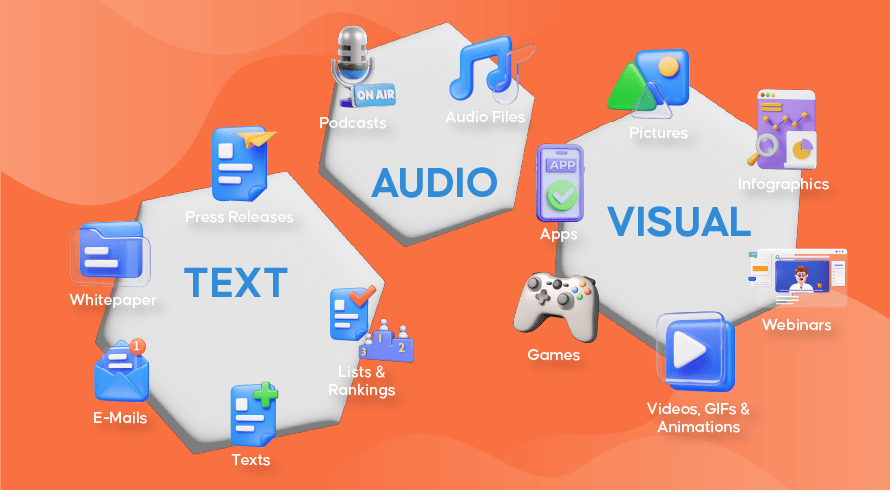Inquivix HQ
1-903, 18 Eonju-ro 146-gil,
Gangnam-gu, Seoul, Korea
06057

SEO content planning is a critical element of any successful digital marketing campaign. SEO content planning helps you create meaningful, high-quality content that will drive organic traffic to your website and improve your overall search engine rankings. But what exactly is an SEO content plan, and how do you go about creating one? Let’s take a look.
Table of Contents
What Is An SEO Content Plan?

An SEO content plan is a strategy that helps you create content that optimizes your website’s visibility online. It involves researching keywords, analyzing competitor websites, creating compelling titles, crafting well-written copy, optimizing headings and images, and creating internal links within your website. All in all, it helps to ensure that your website has a great chance of ranking high in search engine results pages (SERPs).
The Benefits Of Having An SEO Content Plan

An effective SEO content plan can help you stand out from the crowd of competitors vying for the same spot at the top of SERPs, but that’s not its only benefit. Below, we have outlined the many other benefits that having an SEO content plan can provide.
Helps Create Quality Content
Search engines have become increasingly sophisticated over the years and now prioritize websites with quality content. Quality content is not only relevant and useful, but it also needs to be optimized for search engines in order to rank higher in search engine results pages (SERPs).
Quality content should include well-researched keywords, meta descriptions, headlines, subheadings, image alt tags, internal links, and external links. An SEO content plan helps you ensure that all these elements are included when creating new content or optimizing existing pieces.
Organizes Your Content Strategy
An SEO content plan also helps organize your overall content strategy by providing a framework for how each piece of written or visual media should be created and executed. Rather than having all the ideas floating around without direction, this document provides a structure for thinking about your digital marketing efforts in terms of what works best for search engines as well as what resonates with readers.
With this document in place, it becomes easier to keep track of where you are in terms of keyword research, optimization frequency, and outreach tactics. This will automatically result in having an SEO content strategy
Measures Accurate Results
Finally, an SEO Content Plan allows you to measure the success of your campaigns by using metrics such as click-through rates (CTRs), organic website traffic growth rate, average time on page/site duration metrics, etc.
Without tracking progress through these metrics, it’s difficult to know if the changes you make are actually moving the needle toward achieving your desired outcomes. Having access to this data makes it easier to make informed decisions on where resources should be allocated or which areas need more attention in order to meet business goals effectively.
How To Create A Successful SEO Content Plan

Search engine optimization (SEO) is a crucial part of any business’s digital marketing strategy. An effective SEO content plan can help you reach more customers and increase your website traffic. But how do you create an SEO content plan? We have outlined these fairly simple but crucial steps below.
Identify Your Target Audience
Who are you trying to reach with your content? Identifying who your target audience is will help you determine what kind of content you should be creating and how to optimize it for maximum visibility. Knowing who your target audience is is also essential when choosing keywords that will help drive people to your website.
This is crucial to ensuring your content marketing efforts do not go in vain. The next step is to find out how customers try to find your site, and keyword research plays a huge role in that aspect. More on that right below.
Choose Appropriate Keywords
Keywords are key elements of a successful SEO strategy, so they need to be chosen strategically. You must conduct keyword research to identify words and phrases related to your industry that potential customers may use in their searches, then research which terms are the most popular according to their search volume. You can use tools like Google AdWords or other keyword research tools to identify the best options for your business.
Content Objectives
What do you want your content to accomplish? Do you want it to inform customers about a new product or service? Encourage them to take certain actions. It’s important to set clear goals for each piece of content so that you know what kind of performance metrics will indicate success or failure. This will make it easier for you to track progress and make adjustments as needed.
Planning this way also helps you make sure your visitors don’t have to navigate through too many web pages to find what they want, which search engine algorithms find as a positive metric. This way, you have a successful SEO content strategy that is designed to attract, engage, and motivate your target audience.
Decide Which Type of Content Best Suits Your Needs

Once you have identified who your target audience is and what objectives you want your content to achieve, the next step is deciding on the type of content that best suits those needs. Will writing a blog post be most effective? Or maybe visuals like infographics, videos, or podcast episodes will work better?
Knowing which types of content perform best in different contexts will help ensure that your efforts yield the desired results. Combined with the understanding of who your target audience is and what they like, you can create content that resonates with them and the platforms they utilize. Creating SEO content becomes a breeze with this approach, as the chances of it reaching the intended audience while also ranking higher on search engine result pages are greatly increased.
Optimize Your Content For Search Engines
Once you have decided on the type of content and keywords, it’s time to start optimizing everything for search engines. This includes ensuring all images and videos are properly labeled with relevant tags, incorporating keywords into titles and meta descriptions, using internal links throughout posts, etc.
All these elements play an important role in helping search engines rank pages higher on results pages, thus increasing visibility and driving more traffic to the website.
Develop A High-Quality Linking Strategy
Links are crucial to building the credibility of your website with your audience and the search engines. It is important to see how your content creation is connected and to use strong inbound and outbound links to raise your rankings. This is also important to reduce click-depth, which improves the user experience.
Monitor Your Content Performance Regularly

Once everything is set up, it’s important not just to create great SEO-optimized pieces but also to track how well they perform over time. Monitoring metrics such as impressions, clicks, conversions, etc., can give valuable insights into where improvements need to be made and are vital to having a sound SEO content marketing strategy so that future campaigns yield better results than previous ones did. This also means tracking your link-building strategy, as it is a vital part of SEO.
Make Adjustments As Needed
As new trends emerge or existing ones evolve over time, make adjustments as needed in order to keep up with changing user preferences and maintain optimal performance of all pieces of content included in the plan. This includes creating content that evolves with the times and trends rather than repeating the same old. Making adjustments as needed keeps campaigns fresh and relevant while ensuring maximum return on investment (ROI).
Enhance Your Website’s Success With An SEO Content Plan
SEO is not a one-time fix; it requires ongoing effort to keep up with changing trends and algorithms. That’s why having a good content plan in place can help you stay on top of things and make sure that your website remains optimized for searches. A good plan should include regularly updated keyword research and analysis, and guidance on how to effectively craft titles, headings, and copy so that it stands out from the competition without being too “spammy” or off-putting to readers.
Contact us if you want to build a winning SEO content strategy and skyrocket your organic traffic.
FAQs
SEO is comprised of four major aspects, which are technical SEO, content, on-page SEO, and off-page SEO. Technical SEO focuses on optimization techniques for a website’s configuration and architecture, such as utilizing HTML correctly or setting up canonical URLs. Content focuses on creating well-structured content with relevant keywords in order to increase discoverability on search engine results pages. On-page optimization looks at improving visibility on SERPs by tweaking website elements like meta tags or optimizing the title tag of individual pages. Off-page optimization works to improve your website’s overall trustworthy nature by having other websites link back to yours; social signals can also be considered under this pillar. As a whole, mastering all four pillars of SEO is important for ensuring you have successful digital campaigns that drive traffic and reach new potential customers.
Of all the SEO concepts, five are considered some of the most important: audience, industry, user intent, crawling, and indexing. The audience includes understanding who your target readers are, while it is also necessary to be aware of trends within your targeted industry. Understanding user intent helps you know what kind of content should be featured on your website. Crawling encompasses making sure each page is accessible to search bots, and indexing makes sure the web pages appear in relevant search results for users. These five elements not only excite web crawlers but work together as a complete package to boost organic traffic in order to make any website as effective and successful as possible.
